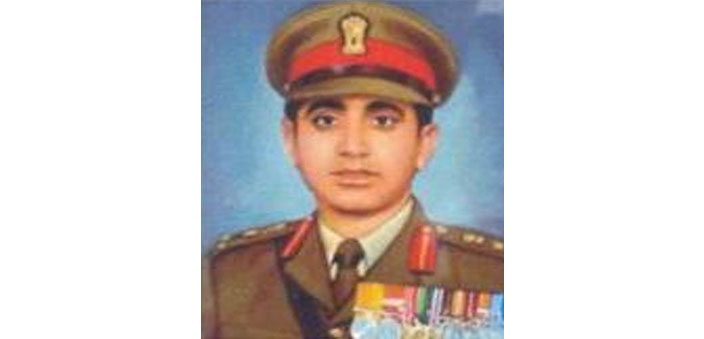Patriotism and highest valour (1934-2016)
RK. Singh was born on 2 February 1934, and was commissioned into 13 Punjab (Jind Infantry) in December 1954. After about two decades of service in 13 Punjab, he was transferred to 14 Punjab (Nabha Akal Infantry). He delayed his promotion by two years to take over the command of the battalion. He was the commanding officer (CO) of the unit when it was deployed in the Eastern Sector in 1971. In November1971, the unit was ordered to occupy Fatehpur which was about 6 kms inside East Pakistan. The unit commenced advance at 7 am on 20 November. The first step was to cross River Kobadak which was deep and had marshy banks on both sides. No safety belts or other safety devices were available, and the boat carrying the first wave overturned. Nine men were drowned. Their bodies were recovered by the divers of the Engineers. The CO kept his composure, did not panic and pressed on with the operations. It was the result of his resolute leadership that the soldiers were full of enthusiasm to do well in the ensuing battles instead of grieving for the casualties. The unit was able to cross by the evening and was given a new task of securing Garibpur. One squadron of tanks of 45 Cavalry was allotted to them. After preparing the positions, they sent out patrols to dominate the area and obtain information about enemy movements. The patrols reported approach by enemy tanks and infantry.
At about 6.15 a.m., the enemy attacked from two directions. The enemy artillery started bombing our position. Our guns responded and our tanks rushed out to face the enemy tanks. Major D.S. Narang, the squadron commander, stood upright and was directing his tanks. His personal example boosted the courage of the men. He was fatally wounded by enemy machine gun fire after he had shot two enemy tanks. He was posthumously awarded the MVC (Mahavir Chakra). An enemy tank managed to sneak close to our defences and Havildar Lekh Raj destroyed it with an RCL gun. He was awarded the VrC (Vir Chakra) for his act. Two more attacks were beaten back. Unmindful of his own safety, Captain G.S. Gill carried a wounded officer on his back through heavy exchange of fire. He was awarded the VrC. At 9.25 a. m., four enemy aircraft started strafing our positions. At 2 p. m., three enemy aircraft were having a free run when four Gnats of the Indian Air Force flew in and shot all the three enemy planes. Two Pakistani pilots bailed out and were captured by the Mukti Bahini. One of them, Parvez Qureshi, later rose to be the Chief of Pakistan Air Force. The enemy had suffered heavy casualties and broke off after 23 November. Thirteen tanks were left behind, three of them in running condition. Six prisoners were captured. The casualties suffered by our force was 19 killed and 40 wounded.
The CO and Subedar Malkiat Singh were awarded MVCs. In addition to that, the unit won two VrCs and two Sena Medals. Troops under command got one MVC, one VrC, and one Sena Medal. The unit had successfully beaten back an attack by a brigade supported by tanks. The Pakistan government carried out a pre-emptive air strike on Indian airfields which led to a general war.
Fourteen Punjab enlarged the defended area to provide a firm base for advance. Ignoring plastic mines, the unit secured Raynagar by 4 December. Jessore was contacted on 7 December. The Pakistan Army was so demoralised that they had left in a hurry, leaving behind large quantities of ammunition, rations and cooked food. The Pakistani Brigadier Mohammad Hyat Khan commented that the front had crumbled and the withdrawal had become a rout. As our forces reached Khulna, information was received that Pakistan was ready to surrender and a cease-fire was ordered. After retirement, R.K. Singh settled down in Meerut and passed away on 6 February 2016.

